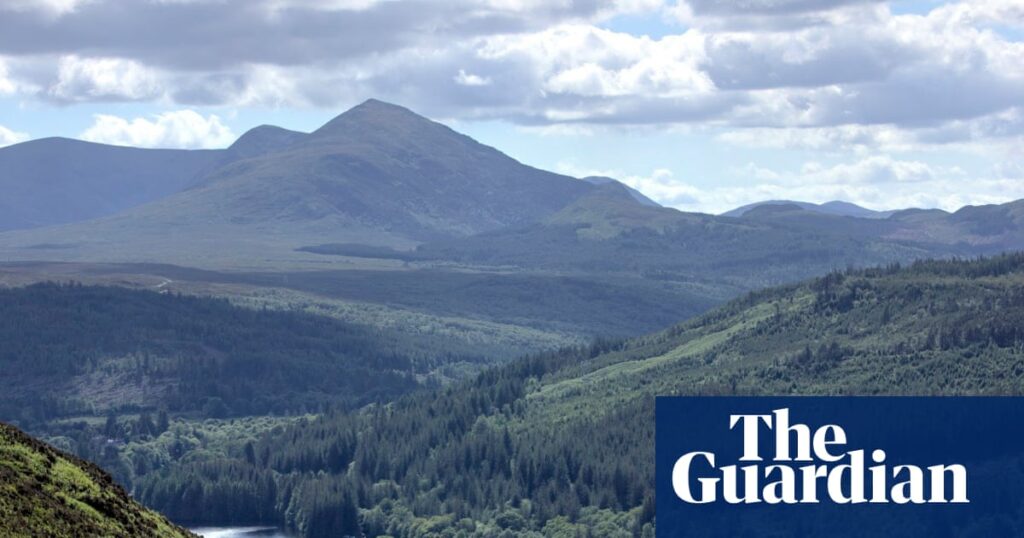If you’re spending a drizzly weekend indoors scrolling for the one-day countryside bolthole you’ll probably never buy, something in the Highlands of Scotland might catch your eye in the Rightmove listings.
Just north of Fort William, where the average property price is a shade over £200,000, is a sale listing for £9m – but this is no lochside bothy ripe for renovation.
Instead, the Glen Buck estate includes a four-bed farmhouse, two-bed holiday cottage, hydroelectric scheme, 3,600 hectares (8,900 acres) of land and part of the nearby loch.
There are possibilities to make more money from its rolling hills in the shadow of the Grampian mountains too, the consistent wind speeds of the area known as the “electric glen” making it prime for wind turbines.
The listing comes amid unhappiness from Highlanders who believe large swathes of land being bought by wealthy individuals inflates property prices and excludes local people from buying where they grew up.
According to government statistics, the rise in house prices in the Highlands is among the highest in Scotland, with a 7% increase between July 2023 and July 2024.
In 2022 the Scottish Land Commission warned the country’s land market is at risk of “overheating”, with the demand from corporations, charities and the privately wealthy for prime Highland estates outstripping supply.
Rod Christie, who is handling the sale on behalf of Galbraith estate agents, said: “At the heart of the Great Glen, Glen Buck estate offers buyers enormous diversity through a wealth of residential, sporting, natural capital and renewable interests.
“It will likely appeal to buyers from across the globe, with private buyers, institutions and investors all able to find a specific point of interest.”
The estate in Aberchalder is rich in history too, closely associated with Scotland’s bloody clan past and the Jacobite rebellion.
The nearby village of Invergarry was once home to a branch of Clan Donald. Approaching Glen Buck along the A82 before Invergarry, drivers come across a macabre monument dedicated to a series of 17th-century reprisal killings among the clans.
The obelisk next to Loch Oich is initially unassuming. However, closer scrutiny reveals it is crowned with a carving of a hand holding a dagger, and seven severed heads.
Called the Well of the Seven Heads, the name refers to revenge killings after two members of Clan MacDonald of Keppoch, a branch of Clan Donald, were murdered by their cousins.
The seven killers were tracked down two years later and themselves killed. They were decapitated, with their heads washed in a well underneath where the obelisk now stands. Their heads were then presented as proof of their deaths. The well can still be seen.
after newsletter promotion
The area has strong links, too, to the Jacobite rebellion. Regiments from the area joined the Jacobite army that attempted to restore the House of Stuart to the British throne.
The nearby village of Fort Augustus was the scene of a siege during the uprising of 1745, and again a year later, as the area was contested between Jacobite forces and those loyal to the British crown.
Luckily, it has been far more peaceful since then. Glen Buck fronts on to the Caledonian canal, which connects the east and west Scottish coasts.
It covers low-lying ground, upland terrain and hill grazing to more than 800 metres at Carn Dearg, and includes native woodland as well as buildings including a farmhouse, bothies and a cottage used for holiday lets.
The leased Glen Buck Hydro Scheme is an electricity generation facility on the estate that will provide rental income until 2065.
The sellers also pointed to “natural capital opportunities” on the estate in the form of peatland restoration potential, and woodland creation supported by “compensatory planting arrangements”.
Meanwhile its “sporting appeal” is represented by well-established deer stalking across open country and areas of woodland, the sellers saying this could be further developed.
Christie said: “With high hills, ancient woodland, open moorland and good-quality farmland, Glen Buck represents the best of the Highlands and enjoys access to, and a spectacular outlook over, Loch Oich.”


